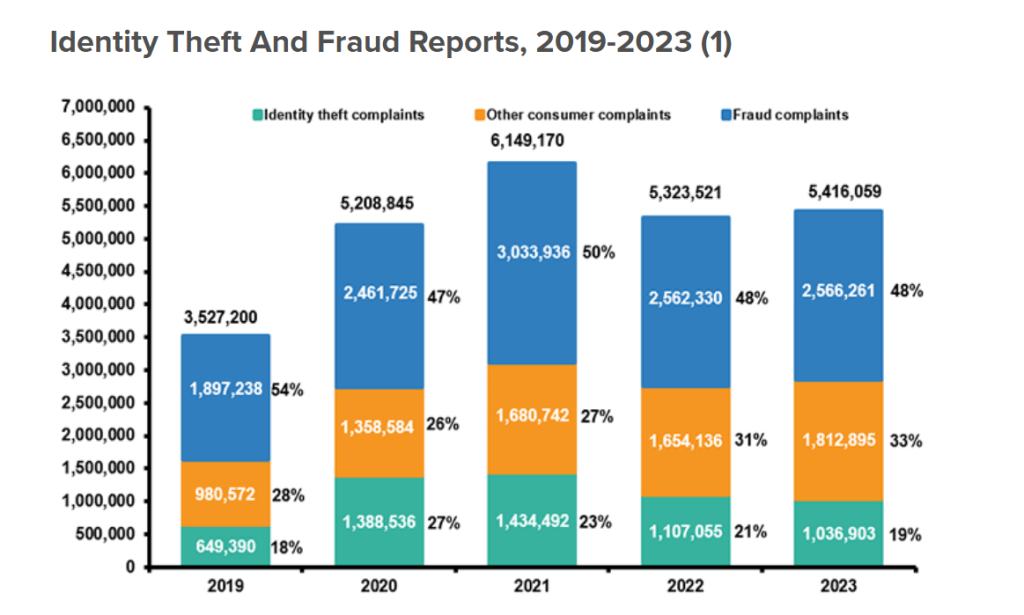Millions of Americans have fallen victim to fraud, scams, and identity theft.
In the digital age, identity protection has become a pressing concern. Millions of Americans have fallen victim to fraud, scams, and identity theft.

These crimes can have severe financial and personal consequences. They can lead to loss of savings, damage to credit scores, and a sense of violation.
But there’s good news. You can take proactive measures to protect your identity. Tools like identity protection rollers and stamps can help safeguard your personal information.
This article will guide you through the importance of identity protection. It will provide insights into how identity theft occurs and how you can prevent it.
Whether you’re concerned about online safety or secure disposal of physical documents, this guide has got you covered. Let’s dive in and learn how to be prepared for identity protection.
The Growing Threat of Identity Theft
Identity theft is a growing threat in the United States. Last year, it affected millions of Americans, causing varying degrees of financial and personal harm.
The most common types of identity theft include credit card fraud, bank fraud, tax-related fraud, and medical identity theft. Each type presents its unique challenges and consequences.

by (https://www.iii.org/fact-statistic/facts-statistics-identity-theft-and-cybercrime)
Top Five Types of Identity Theft, 2023 (1)
|
The emotional impact of identity theft can be as significant as the financial one. Victims often report feelings of stress and a sense of violation.
But identity protection is not just about reacting to theft. It’s about taking proactive measures to prevent it. Here are some common types of identity theft:
- Credit card fraud
- Bank fraud
- Tax-related fraud
- Medical identity theft
Understanding these threats is the first step towards effective identity protection. The next sections will provide actionable advice on how to safeguard your personal information.
Understanding Identity Theft and Its Impact
Identity theft is not a single crime. It’s a range of illegal activities centered around stealing personal information. This information is then used for fraudulent purposes, often leading to financial loss.
The impact of identity theft extends beyond financial loss. It can damage your credit score, making it harder to get loans or credit cards. It can also lead to legal issues if the thief commits crimes under your name.
The emotional toll of identity theft is also significant. Victims often report feeling violated and stressed. This emotional impact can last long after the financial issues are resolved.
Understanding the potential impact of identity theft is crucial. It underscores the importance of proactive identity protection measures. In the following sections, we’ll explore these measures in detail.
Proactive Measures for Protecting Your Identity
Protecting your identity requires a proactive approach. It’s not just about reacting to theft, but preventing it. There are several measures you can take to safeguard your personal information.
One simple measure is to use identity protection rollers and stamps. These tools obscure personal information on physical documents. They are cost-effective and provide an additional layer of security to shredding.
Online, you can protect your identity by using strong, unique passwords. Be cautious about sharing personal information. Regularly review your social media privacy settings and be mindful of what you share.
Credit monitoring services can also be beneficial. They can alert you to unauthorized activities in your financial accounts. Regularly reviewing your credit reports for signs of identity theft is also crucial.
Using Identity Protection Rollers and Stamps
Identity protection rollers and stamps are simple tools. They use a special pattern to obscure personal information on physical documents. This makes the information unreadable, even if the document is held up to the light.

These tools are particularly useful for those who handle sensitive documents regularly. They are easy to use, portable, and come in a variety of designs to suit different needs.
Online Safety: Passwords, Scams, and Secure Browsing
Online safety is a critical aspect of identity protection. One of the simplest ways to protect your identity online is to use strong, unique passwords. Avoid using easily guessable passwords like “123456” or “password”.
- Be aware of phishing scams. These are attempts by thieves to trick you into giving out personal information. They often come in the form of emails or messages that look like they’re from legitimate companies.
- Use a Virtual Private Network (VPN) and anti-malware software. These tools can help protect your personal information online.
- Be cautious when using public Wi-Fi. Unsecured networks can be a goldmine for identity thieves.
Monitoring and Responding to Identity Threats
Monitoring your personal information is a key part of identity protection. Regularly check your financial accounts for any unauthorized activities. Also, review your credit reports for signs of identity theft.
- Stay informed about the latest scams and fraud tactics. Awareness is key to staying ahead of identity thieves.
- Secure your physical mail. The role of mail in identity theft is often underestimated. Secure your mailbox and be cautious with mail disposal.
Prompt reporting of identity theft can limit damage. It also increases the chances of recovering from the crime.
Credit Monitoring and Alerts
Credit monitoring services can be a valuable tool. They can alert you to unauthorized activities in your financial accounts. This can help you catch identity theft early, before it causes significant damage.
It’s also important to regularly review your credit reports. Look for signs of identity theft, such as accounts you didn’t open or charges you didn’t make.
Reporting and Recovering from Identity Theft
If you suspect you’ve been a victim of identity theft, report it promptly. Contact your bank, credit card companies, and the credit bureaus. Also, file a report with the Federal Trade Commission (FTC).
Recovering from identity theft can be a long process. But prompt reporting can limit the damage and increase your chances of recovery. The FTC provides resources and assistance for victims of identity theft.
The Role of Identity Protection Services
Identity protection services offer a range of tools to help safeguard your personal information. They often include credit monitoring, alerts for suspicious activity, and assistance in recovering from identity theft. Some services also offer insurance to cover costs related to identity theft.
- Consider the terms and conditions before enrolling in an identity protection service. Understand what is covered and what is not. Also, check for any hidden fees or charges.
Remember, no service can guarantee complete protection against identity theft. But they can provide valuable assistance and peace of mind. They are an important part of a comprehensive approach to identity protection.
Conclusion: Staying Vigilant in the Digital Age
In the digital age, identity protection is more important than ever. It requires ongoing effort, vigilance, and a comprehensive approach that includes both digital and physical strategies.
Remember, staying informed and proactive is your best defense. With the right tools and practices, you can significantly reduce the risk of becoming a victim of identity theft.